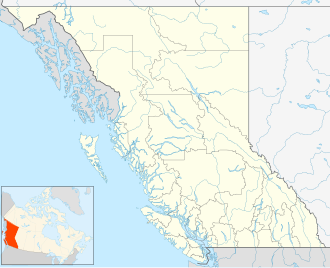| Redfern-Keily Provincial Park | |
|---|---|
 Interactive map of Redfern-Keily Provincial Park | |
| Location | Peace River RD, British Columbia, Canada |
| Coordinates | 57°26′N123°57′W / 57.433°N 123.950°W |
| Area | 80,712 ha (311.63 sq mi) |
| Established | June 29, 1999 |
| Governing body | BC Parks |
| Website | Redfern-Keily Provincial Park |
Redfern-Keily Provincial Park is a provincial park in British Columbia, Canada. The park is part of the larger Muskwa-Kechika Management Area. [2] It is mainly accessed via snowmobile, off-road vehicle, or horseback. [3] Off-road vehicles must weigh under 750 kilos. [3]
Contents
In 2024, 20-year-old Sam Benastick was lost in the park for 50 days. [4] Fortunately, he was found alive, much to the surprise of the searchers. [5]
